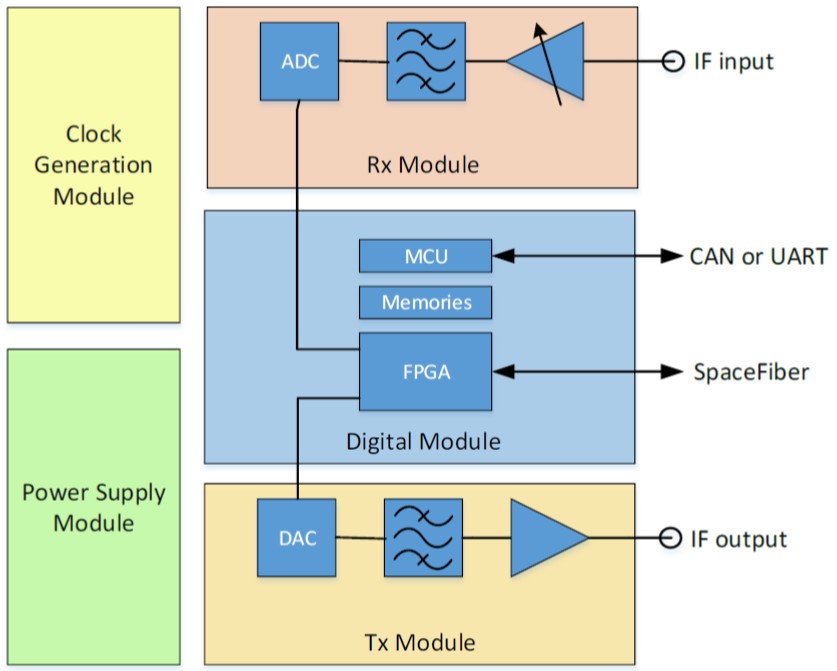-
StatusCompleted
-
Status date2025-09-26
-
Activity Code5C.045
The purpose of the wideband modem is to exploit the very wide (59-71 GHz) frequency allocation in Ka/Q/V-band with as few as possible channels, in order to optimise the satellite platform resources.
The modem is breadboarded (TRL 4) with very wideband transmit and receive capabilities and respectively high symbol rates.
By implementing a variety of coding and modulation options, the modem is capable of supporting various inter-satellite links (ISL) ranges, from short- to medium-range that can enable communication between small/medium platforms.
The main challenges that are addressed in this activity are mainly how to perform onboard encoding/decoding, analogue/digital conversion as well as modulation/demodulation over wideband (GHz) channels in a lightweight manner.
The modem enables radio frequency (RF) ISL links with:
- Limited FPGA resources;
- Imperfect and bandlimited analog components;
- Doppler scenarios typical to large low Earth orbit (LEO) constellations.
The demonstrated wideband RF ISL provides a viable alternative to the more complex optical inter-satellite link technology.
The Field-Programmable Gate Array (FPGA)-based implementation is easily extended or customised to the needs of a specific mission.
-
A wideband ISL modulator receiving digital user data from the user data interface and delivering encoded and modulated data symbols at an appropriate intermediate frequency (IF).
-
A wideband ISL de-modulator receiving modulated data symbols at an appropriate IF, tracking the signal in extreme doppler scenarios, decoding the symbols, and delivering the digital user data to the user data interface.
The Gigabaud wideband ISL system features:
- Low power, high data rate encoder and decoder;
- Wideband (GHz range) modulator and demodulator;
- High rate converters between analogue and digital domains;
- CCSDS 131.2-B-2 coding and modulation;
- Flexible FPGA solutions suitable for on-board applications;
- Doppler (shift and rate) resilient signal tracking, and pre-/post-compensation.

The activity is organised in four tasks:
- Task 1: Overview of state-of-the-art ISL and their use of RF and optical technologies, followed by derivation of a set of finalised technical specifications and a preliminary design;
- Task 2: A detailed design justified by mathematical and simulated performance, and implementation of the breadboard;
- Task 3: Validation of function and performance, of the breadboard;
- Task 4: A technology assessment and development plan. The following milestones applied: SRR, BR, PDR, DDR, TRR, and FR.
The following milestones applied: SRR, BR, PDR, DDR, TRR, and FR.
The project is completed.
The breadboard is validated for function and performance and RF ISLs with data-rates beyond Gbps are achieved, at a Signal-to-Noise Ratio (SNR) below 0.7dB and challenging doppler scenarios.




